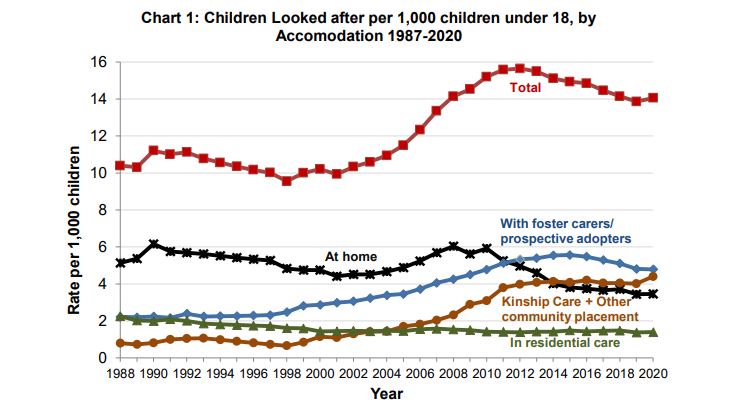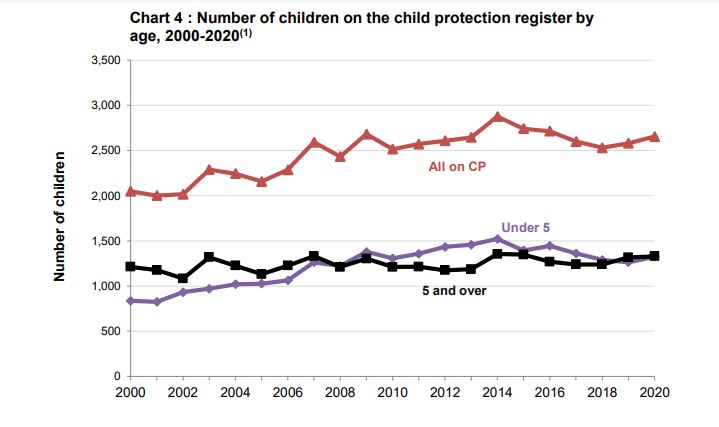Latest statistics about children and young people in and leaving care
On 30 March 2021, the Scottish Government published official statistics about children an young people who are looked after on the child protection register and in secure care.. These latest statistics cover the year 1 August 2019 to 31 July 2020.
These figures confirmed some interesting trends, and pose a variety of questions about how children's social work practice is changing in Scotland.
Here we present some headline figures for looked after children and care leavers.
Looked after children and young people
- an estimated 14,458 children were looked after in 2019-20, an increase of 1% from the previous year and the first increase after seven consecutive years of decline
- foster care is the most common accommodation for looked after children, accounting for a third of looked after children (33%), whereas residential care accounts for 10% of looked after children
- the number of children starting to become looked after decreased by 9%, while the number ceasing to be looked afterdecreased by 18%, compared with 2019.
Number of looked after children by where they live

Continuing Care
Continuing Care is the continued provision of the accommodation and other assistance that was being provided by the local authority immediately before the young person ceased to be looked after. Only children who cease to be looked after aged 16 years or over and were looked after away from home are eligible for Continuing Care. Continuing Care has been available to eligible care leavers from April 2015, enabling eligible young people aged 16 or older to stay in the same kinship, foster or residential care placements when they ceased to be looked after. The 'higher age' for continuing care eligibility rose annually as part of a roll out strategy. Continuing Care became fully operational in April 2020, allowing all eligible care-leavers to remain in their care setting from age 16 until their 21st birthday
- 229 children who ceased to be looked after between 1 August 2019 and 31 July 2020 received Continuing Care - in addition there were a further 77 young people in a Continuing Care placement
Aftercare
From April 2015, aftercare eligibility has been extended to cover all care leavers up to and including people aged 25 where it previously only covered up to their 21st birthday. This extension of the original policy has now reached maturity so age groups entering eligibility for aftercare should broadly equal those sufficiently mature to leave aftercare. Figures for those eligible for aftercare have risen from 4,602 in
2016 to 6,492 in 2019 and increasing further to 7,198 in 2020.
- of the estimated 7,198 care leavers eligible for aftercare services on 31 July 2020, 57% were known to be receiving aftercare.
Child protection
- the number of children on the child protection register increased by 3% from 2,580 in 2019
to 2,654 in 2020 to an estimated 2,668, but remains lower than the peak recorded in 2014 - there was a decrease in the number of child protection registrations and deregistrations in the last year, by 8% and 9% respectively
- the most common causes for concern were emotional and domestic abuse, parental substance misuse, and neglect
Number of children on the child protection register by age

Secure care
Secure care is used for a small number of young people who present high risk to themselves or others. A placement to secure care can only be authorised following a decision through the Children's Hearing System or a Court, or as an emergency placement for up to 72 hours before attending a hearing or court.
- average number of residents increased by 3 to 82 since 2019
- the number of young people admitted to secure care decreased by 11% from 217 to 194 since 2019


